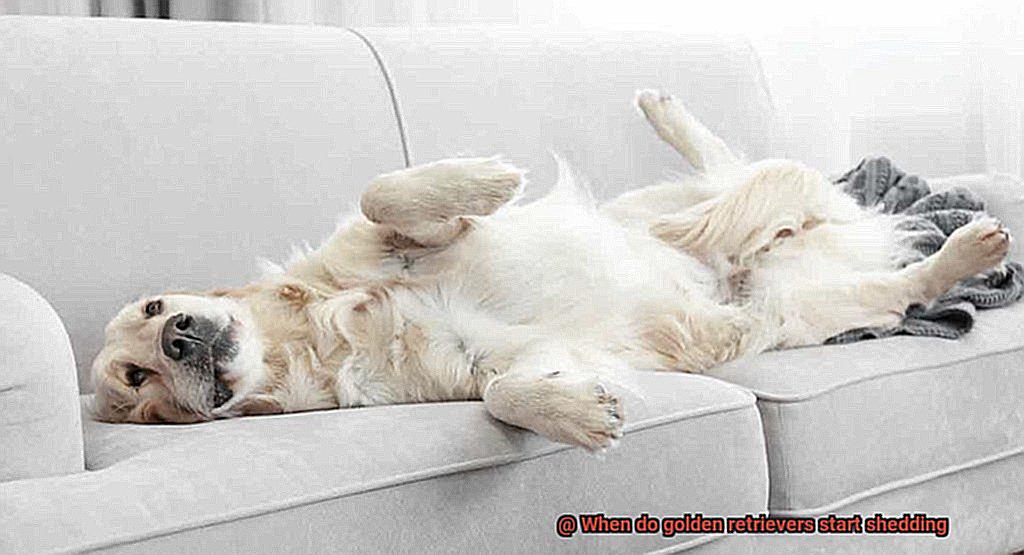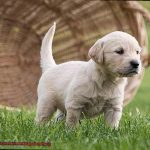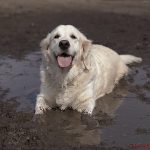Calling all dog enthusiasts. Are you the proud parent of an adorable golden retriever? These furry friends are known for their lovable and friendly nature, but as with any breed, proper care is essential. One of the most common questions asked by golden retriever owners is: when do golden retrievers start shedding?
If you’re a first-time owner, you might be surprised to learn that these dogs shed a lot. But don’t worry – there are ways to manage it. The first step is understanding when your dog will start shedding.
In this informative blog post, we’ll explore everything there is to know about golden retriever shedding. We’ll delve into when these pups typically start shedding and why they shed so much. Plus, we’ll provide some useful tips on how to minimize hair around your home and keep your pup looking healthy and happy.
By the end of this post, you’ll be a pro on golden retriever shedding and have all the tools you need to care for your furry friend like a champ. So let’s get started.
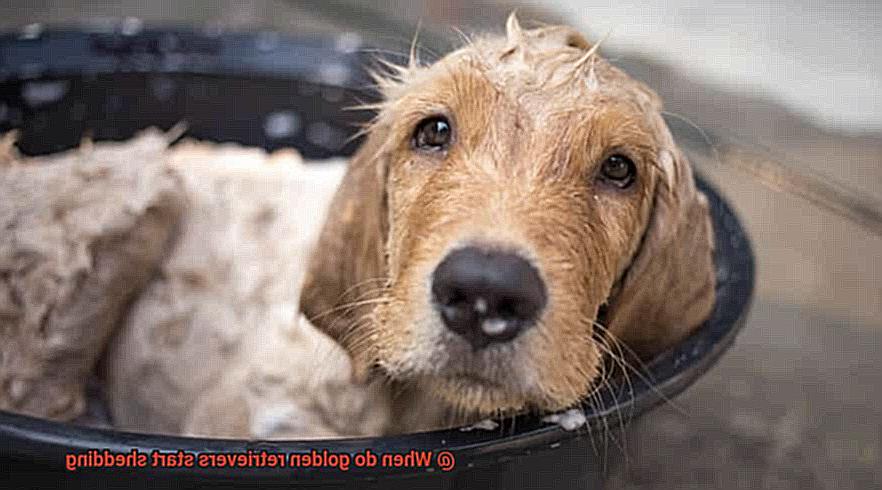
Shedding in Puppies
Contents
Golden retrievers are known for their beautiful, long, and thick coat, but like all dogs, shedding is a natural process that cannot be avoided. Shedding refers to the process of losing old or damaged hair to make way for new hair growth. As puppies grow and mature, they will start shedding more often. In this article, we’ll delve into everything you need to know about shedding in golden retriever puppies and how owners can manage it effectively.
Typically, golden retriever puppies start shedding at around four to six months of age when their adult coat starts growing in, and they shed their puppy coat. However, shedding in puppies differs from shedding in adult dogs as puppies are still developing their coats, and their shedding may not follow a regular schedule. Depending on factors such as diet, health, and environment, they may shed more or less than usual.
As a responsible puppy owner, it’s vital to establish a regular grooming routine early on to help manage shedding. Brushing your golden retriever puppy’s coat regularly not only removes loose hair but also prevents matting. It also helps your puppy get accustomed to being groomed, making it easier to groom them as adults.
In addition to grooming, providing your golden retriever puppy with a healthy diet and regular exercise will help keep their coat healthy and reduce shedding. Your veterinarian can advise on the best diet for your puppy and how much exercise they need based on their age and breed.
It’s important to note that not all golden retrievers shed at the same rate. Some dogs may shed more heavily than others due to factors such as genetics, diet, and overall health. Additionally, female golden retrievers may shed more during their heat cycles.
During the spring and fall seasons, adult golden retrievers shed heavily. The undercoat is a layer of soft fur that lies beneath the topcoat and provides insulation against cold weather. Shedding the undercoat helps regulate the dog’s body temperature during warmer months. Owners should be prepared for regular grooming and cleaning during these times to manage their dog’s shedding effectively.
Shedding in Adult Golden Retrievers
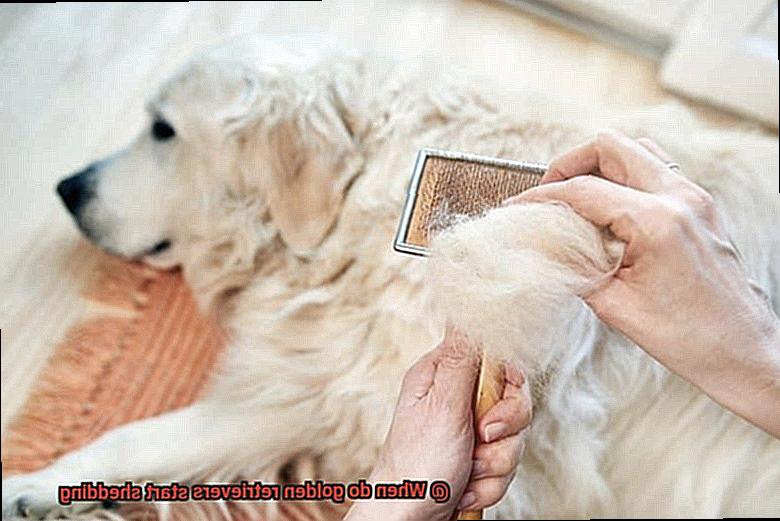
Shedding is a natural process that’s necessary for your dog’s overall health and well-being. Golden retrievers typically shed twice a year, during the spring and fall seasons, as they adjust to new weather conditions.
Golden retrievers have thick double coats, made up of a soft undercoat and a longer, thicker outer coat. The undercoat keeps them warm in winter, while the outer coat shields them from the elements like rain, wind, and sun. Shedding is essential to maintaining a healthy coat that functions correctly.
However, shedding patterns can vary among golden retrievers due to factors such as age, health, diet, and environment. Some dogs may shed more than others, particularly if they have underlying health issues or are exposed to allergens.
To manage shedding in adult golden retrievers, regular grooming and brushing are crucial. Brushing their coat at least once a week removes loose fur and prevents matting. Using a de-shedding tool or slicker brush can also help reduce shedding by removing dead hair from the undercoat.
Regular grooming not only helps manage shedding but also promotes healthy skin and coat. It enables you to check for skin irritations, ticks or fleas, and any other health issues that may otherwise go unnoticed.
It’s essential to pay attention to your golden retriever’s shedding patterns and consult with a veterinarian if you notice any excessive shedding or changes in coat texture or appearance. Your vet can help identify any underlying health issues that might be causing excessive shedding.
Factors That Affect How Much a Dog Sheds
Shedding is a natural process that all dogs go through and is influenced by several factors. Understanding these factors can help you manage your dog’s shedding and keep their coat looking healthy and beautiful.
The breed of your dog is the first factor that affects how much they shed. Different breeds have different types of coats, and some are more prone to shedding than others. For example, breeds like Golden Retrievers, Labrador Retrievers, and German Shepherds all have thick coats that shed quite a bit. On the other hand, breeds like Poodles, Bichon Frises, and Shih Tzus have hair that grows continuously and does not shed much.
Genetics is another factor that affects shedding. Some dogs are simply more prone to shedding due to their genetic makeup. If your dog’s parents and grandparents shed a lot, there’s a good chance that your dog will as well.
The environment can also play a role in shedding. Dogs that live in warmer climates tend to shed more than dogs that live in cooler climates. This is because dogs shed their coat to regulate their body temperature, and in warmer climates, they need to shed more to stay cool.
Diet can also affect shedding. Feeding your dog a balanced and nutritious diet can help reduce shedding. Dogs that are fed low-quality food or food that does not meet their nutritional needs may shed more than dogs that are fed high-quality food.
To manage your dog’s shedding, regular grooming is crucial. Brushing your dog’s coat regularly will help remove loose fur and prevent mats from forming. You may also want to consider using a de-shedding tool or taking your dog to a professional groomer for a trim.
When Golden Retrievers Shed Most Heavily
Golden Retrievers are known to be great family dogs, but they also come with a lot of fur that sheds twice a year. When do Golden Retrievers shed most heavily? These heavy shedding periods take place during spring and fall, as they transition from their winter to summer coat and vice versa.
The shedding process can last for several weeks, and it’s not uncommon for your home to be covered in dog hair during this time. To manage shedding in Golden Retrievers, regular grooming is key. Frequent brushing removes loose hair and prevents mats and tangles from forming in their coat, ensuring that their fur looks healthy and shiny.
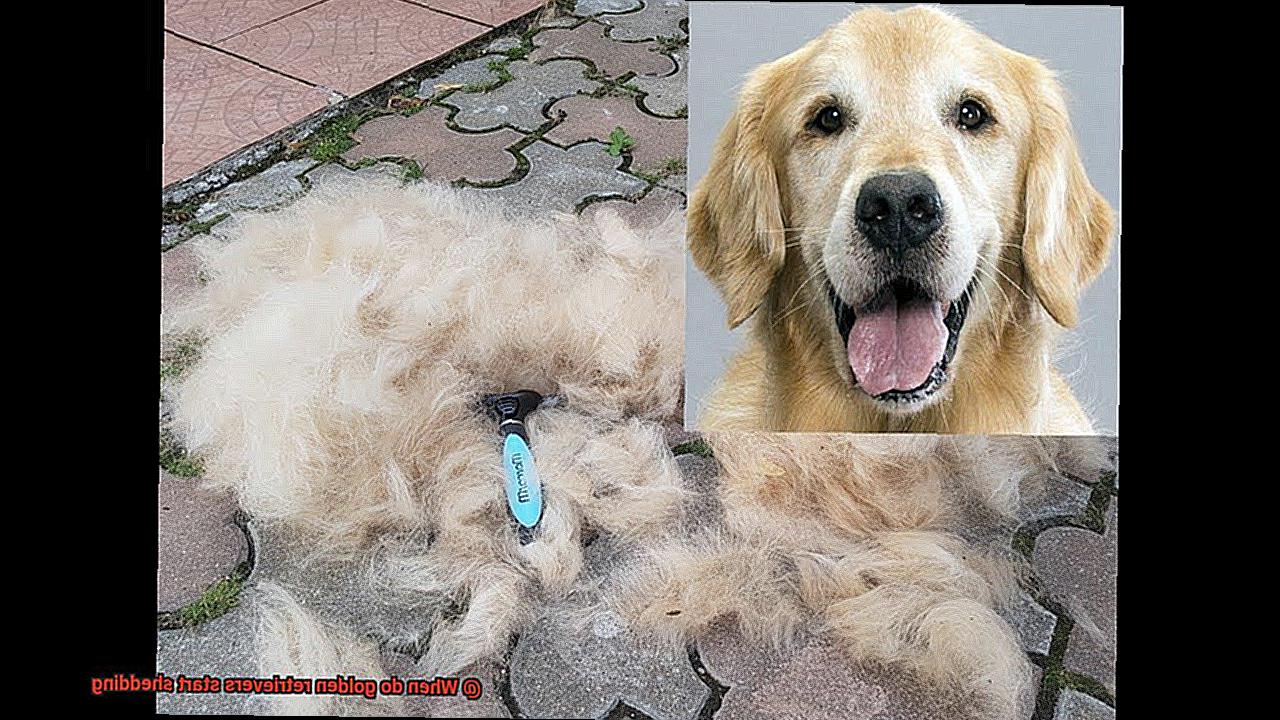
It’s important to note that excessive shedding may indicate an underlying health issue. If you notice your furry friend is shedding more than usual or has bald patches, it’s best to consult with your veterinarian to rule out any potential problems.
To help reduce shedding, maintaining a healthy lifestyle is essential. Providing your Golden Retriever with a nutritious diet and regular exercise helps keep them healthy overall. This will aid in reducing the amount of hair they shed, making your life easier during shedding season.
Grooming and Cleaning During Heavy Shedding Periods
However, during heavy shedding periods, it can be quite a daunting task to keep up with the amount of fur your furry friend is shedding. But fear not. With some extra effort and attention to detail, you can make grooming and cleaning during these periods a breeze.
Shedding is a natural process that occurs when dogs lose their old or damaged fur to make way for new growth. Golden Retrievers typically shed twice a year, but the exact timing can vary depending on factors such as climate, age, and health. During these heavy shedding periods, it’s essential to increase your grooming routine to prevent excessive hair from accumulating in your home and keep your dog comfortable.
Regular brushing is an excellent way to remove loose fur before it falls out and reduce the amount of hair that ends up on your floors and furniture. A slicker brush or de-shedding tool can be particularly effective in removing undercoat and preventing mats from forming. Plus, it’s a great bonding experience for you and your furry friend.
Bathing your Golden Retriever during shedding periods can also help remove loose fur and keep their coat healthy. However, it’s crucial to use a gentle shampoo and conditioner specifically designed for dogs to avoid drying out their skin. And don’t forget to dry your dog thoroughly after bathing to prevent any moisture from getting trapped in their coat, which could lead to skin irritation or infection.
Keeping your home clean during heavy shedding periods is equally essential in maintaining a comfortable living space for both you and your furry friend. Vacuuming regularly and using lint rollers or pet hair removers can help reduce the amount of hair that accumulates on your floors, carpets, and furniture. You might also want to consider using a high-efficiency particulate air (HEPA) filter to trap airborne allergens and dander.
Also Read: How much do Golden Retrievers actually shed?
Conclusion
In conclusion, shedding is a completely natural process for all dogs, including golden retrievers. Shedding happens when old or damaged hair falls out to make way for new growth. For golden retriever puppies, shedding starts around four to six months of age when their adult coat begins to grow in and they shed their puppy coat. Adult golden retrievers typically shed twice a year during the spring and fall seasons as they adapt to changing weather conditions.
To manage shedding effectively, regular grooming and brushing are crucial. Keeping your dog’s coat brushed regularly will help remove loose fur and prevent mats from forming. Additionally, providing your furry friend with a nutritious diet and plenty of exercise will keep their coat healthy and reduce shedding. It’s important to pay attention to your dog’s shedding patterns and consult with a veterinarian if you notice any excessive shedding or changes in coat texture or appearance.
During heavy shedding periods, it’s critical to increase your grooming routine to prevent hair from accumulating in your home and ensure your pup stays comfortable. Regular brushing, bathing, and cleaning can help reduce the amount of hair that collects on floors, carpets, and furniture.

